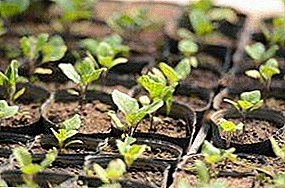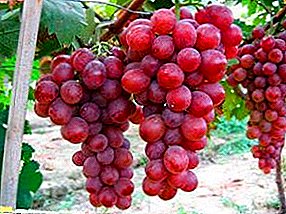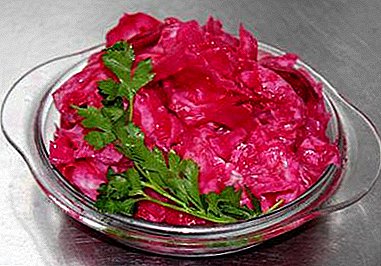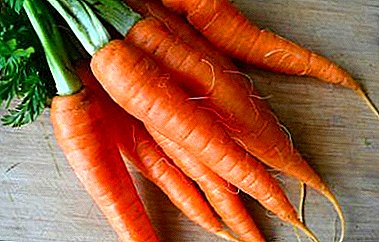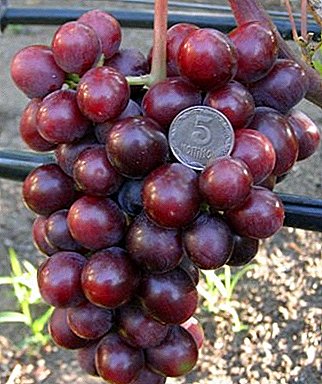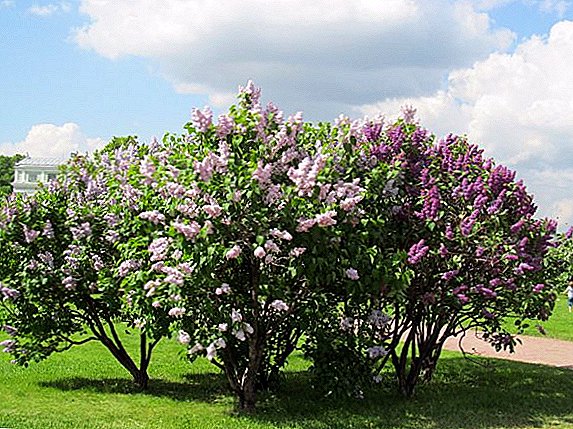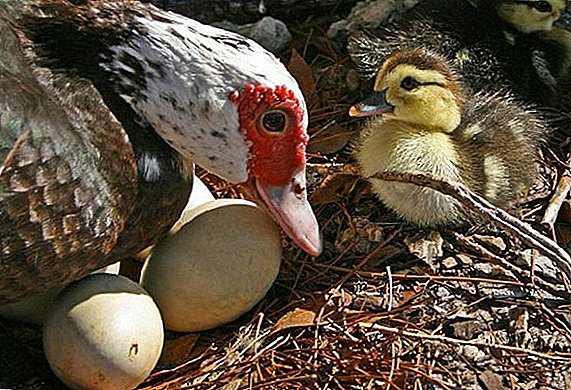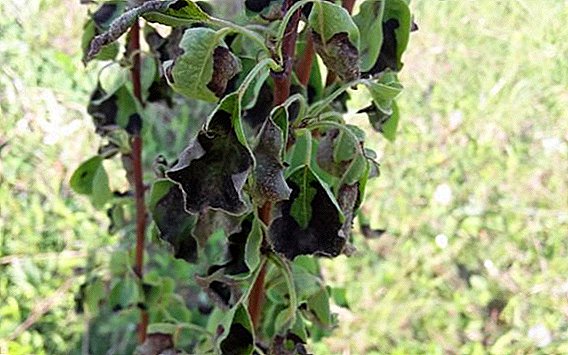 Pear - one of the most common fruit trees in the suburban areas. Often gardeners are faced with a sudden blackening, twisting its foliage, which leads to the death of the tree. Because of what diseases and other factors such a problem appears, we will understand this article.
Pear - one of the most common fruit trees in the suburban areas. Often gardeners are faced with a sudden blackening, twisting its foliage, which leads to the death of the tree. Because of what diseases and other factors such a problem appears, we will understand this article.
Bacterial burn
A bacterial burn is considered the most dangerous and frequent disease of pear. The problem is that the disease does not stop at one instance, infecting all the surrounding plants.
Causes and signs of the disease
The causative agent of infectious disease is enterobacteria group (e.g. salmonella). The affected areas of the plant, as the disease progresses, secrete a certain yellowish substance, which contains a whole settlement of harmful microorganisms.  The main factors of their spread to healthy trees are:
The main factors of their spread to healthy trees are:
- insects (pollinating and parasites) and birds moving from tree to tree, insects and birds on their legs and wings carry microbes;
- frequent rains, fogs - it is noticed that wet weather is an ideal environment for the reproduction and spread of bacteria;
- soil saturation with nitrogen and organic matter.
Learn more about the symptoms and treatment of a bacterial burn.
Symptoms of defeat disease:
- petals of inflorescences fade and fly, the pedicel changes its color first to bright green, and then to the color of light amber;
- as the kidneys are affected, they do not fall off, but darken and lose their function;
- leaves do not fly around, but blacken with whole rosettes;
- the affected branches also acquire dark color;
- penetrating through cracks in the bark, the disease infects the trunk, the bark dries out, turns brown in color and forms dead zones. With such a necrosis, the discharge of a milky liquid substance is noticed.
Did you know? The mariners of ancient Greece fought with the help of the pear from nausea and motion sickness.
What to do
It is always easier to prevent than to cure, so first we will talk about measures to prevent bacterial burn. So that reduce the risk of disease, you need to remember and consider the following:
- weeding (weeds may be infected);
- for any plantings and procedures in the garden, it is obligatory to use only clean, equipment exclusively for the garden;
- wild fruit trees located near the site should be uprooted;
- Do not ignore regular insect garden treatments with insecticides.

Measures to combat the existing foci of infection:
- streptomycin;
- tetracycline;
- "Fitosporin";
- ofloxacin.
These drugs should be used strictly according to the instructions, you need to spray all the affected areas: inflorescences, leaves, shoots and stem of the plant. Spray the procedure in cloudy, windless weather.
An effective remedy is also a solution of copper sulfate with lime. It should be noted here that higher dosages can lead to chemical burns of foliage.
Important! If, treatment with drugs does not lead to a healing effect, the diseased tree must be uprooted and disposed of. Instruments used for this are sterilized with formalin or carbolic acid.
Video: treatment of a bacterial burn of a pear
Pear scab
Scab - an infectious disease, the causative agents of which can spend the winter on the affected shoots, fallen leaves. The spread of the disease depends largely on weather conditions.
Did you know? The Chinese are firmly convinced that friends or lovers cannot share a single pear, otherwise it will lead to a quarrel and separation.
Why and how manifest
The cause of the infection are fungi that are active in a humid environment. It is noteworthy that the fungus can also appear in dry, hot weather in the presence of abundant dew.
The symptoms of infection indicate dark spots with fluffy bloomlike mildew stains. As the disease progresses, the foliage turns black, the tissues are destroyed, which leads to falling leaves. In the future, scab affects the branches, covering them with a dark, brown shade with a crust. Without adequate treatment, the fruits are affected by being covered with black dots. 
How to treat
At the first symptoms, an effective treatment is spraying a Bordeaux liquid. Due to the short duration of the drug (14 days), treatment is carried out up to seven times per season. The first procedure is carried out before the start of bud break.
Learn how to get rid of scab on a pear.
Preparations of systemic action:
- "Horus";
- "Strobe";
- "Come on."
The duration of action of drugs from 20 to 35 days, the treatment is carried out twice per season, the drugs are not washed away by rain.
Video: processing of pears and apples from scab fungicidal preparations
In combination with the treatment with drugs, foliar dressing is carried out by one of such fertilizer:
- ammonium nitrate (10% concentration);
- ammonium sulfate (10%);
- potassium chloride (from 3 to 10% concentration);
- potassium sulfate (3-10%);
- potassium nitrate (5-15%);
- potassium salt (5-10%).
Prevention measures:
- timely pruning (thick crown - an ideal medium for fungi);
- cleansing of the tree near the foliage and weeds;
- during the growing season it is recommended to keep the near-stem circle under the black steam;
- in the spring, they carry out preventive spraying with the “Agat” preparation or a similar agent.
Read also about the treatment of pear from rust.
Lack of elements and blackening of leaves
Blackened pear leaves can be a reaction to a lack of certain minerals.  Plant response to a shortage of elements
Plant response to a shortage of elements
Consider more:
- potassium. The edges of the leaf plates begin to dry, forming a kind of dark-colored fringe, the plate itself shrinks, changes shape. A well-marked lack of mineral in the lower, older branches;
- iron. The growth of foliage slows down, chlorosis is observed, and not only the leaves, but also the tips of the shoots dry out. The tree begins to drop foliage, the amount of the crop decreases, its quality deteriorates. Most affected young shoots of the current year;
- zinc. The lack of mineral causes drying and darkening of the foliage. During the fruiting period, the fruit becomes shallow, its skin changes its structure, becoming covered with dense areas and dark spots. Foliage and branches are deformed;
- calcium. Foliage with a lack of calcium is prone to burns, covered with dark spots, curls. The taste of fruits worsens, under the skin the pulp is affected by spotting, the shelf life of the fruits decreases;
- phosphorus. Sheet plate changes shape, pulling in length, darkens. Young shoots stop growing, deformed. The foliage on the old shoots flies;
- copper. The lack of this element in the soil is extremely rare, mainly on peat soils, less often - on sandy and sod soils. There is a lack of darkening and twisting of the leaves, the drying of young shoots and treetops.
Pear Leaf Pests
Blackening and shrinking of foliage can be caused by parasitic insects. Pests and their offspring feed on plant sap and tissue.
Medianitsa
Distinguish three insect species: spotted, red and yellow coppers. Most often adult individuals winter on a tree, breeding in spring. Insect lays eggs in the bark of the shoots, and later - on the swelling buds and foliage.  The first procedure of destruction is carried out in early spring, when during the day the temperature is above zero, necessarily on a sunny, windless day. Use these drugs:
The first procedure of destruction is carried out in early spring, when during the day the temperature is above zero, necessarily on a sunny, windless day. Use these drugs:
- Aktara;
- "Sherpa";
- "Fastak".
The first procedure destroys adult insects, the subsequent ones carried out before and immediately after flowering kill the larvae. When re-spraying apply, for example, "Dimilin".
Learn how to deal with pests of pears: leafworm, gall mite.
Pear gall mite
The arachnid insect hibernates under the bark, and in spring the females lay eggs in the kidneys. Both adults and their offspring feed on the sap of the tree cells. The pest can destroy the entire garden, as it does not shun other plants, and its spread is helped by the wind and insects pollinators, birds. It should be noted the size of the parasite - up to 3 mm in length.  In the spring, it is necessary to treat acaricidal drugs, since insecticides are helpless against the parasite. Apply these drugs:
In the spring, it is necessary to treat acaricidal drugs, since insecticides are helpless against the parasite. Apply these drugs:
- "Decis" (2%) or "Inta-Vir" before the start of bud break;
- Keltan (20%) or Karbofos (10%) in the period of the formed buds;
- colloidal sulfur or "Fufanon" (0.1%) after flowering.
Important! The solution is prepared according to the instructions for the preparation, if necessary, spraying is repeated at intervals of ten days.
Aphid
This microscopic parasite is particularly fertile, populating the tree with whole colonies. The problem of insect dominance is exacerbated by the fact that by drinking juices, it leaves the feces affecting the tree fungi. In addition, the parasite females can fly to other trees, striking them too. The most common species are green, brown and red aphids.  You can fight with aphids by folk methods:
You can fight with aphids by folk methods:
- Celandine infusion: 3-4 kg of fresh or 1 kg of dried raw material is poured over with 1 bucket of water, covered with a lid and infused in a warm place for 36 hours;
- Dandelion infusion: 400 grams of roots (or 600 grams of leaves) infused for 3 hours in 10 liters of water;
- onion infusion: 200 grams of onion peel are poured with 10 liters of water and infused for 12-15 hours;
- soap solution: 300 grams of laundry soap on the same 10 liters of water.
Video: processing of fruit trees from aphid with liquid ammonia
Chemicals:
- "Kinmiks" - in early spring;
- "Agravertine" - in the period of swelling of the kidneys;
- "Spark" - after flowering.
Care errors
The main mistake novice gardeners - high humidity. When the crone is too thick, the sun's rays do not penetrate deep into. Moisture remaining after precipitation is an ideal environment for the reproduction of fungi and other infections, the shadow is good for colonies of pests. Therefore, trimming trees is one of the important factors for maintaining plant health.
Watering is certainly necessary, but an excess of moisture in the soil provokes the proliferation of microorganisms, attracts insects, increases the risk of rotting of the root system. Water only when needed and dispense the water rate. An important role is played by loosening, saturating the soil with oxygen.
Sure to you need to weed the trunk circle and the surrounding area from weedsFirst, they grow thickly, again creating increased humidity; secondly, a part of nutrients is taken away from a pear, weakening its immunity.  Before wintering should be carefully clean the area of fallen leaves and small twigs. Recurrent leaves - a favorite place of fungi and wintering parasites.
Before wintering should be carefully clean the area of fallen leaves and small twigs. Recurrent leaves - a favorite place of fungi and wintering parasites.
Pear prevention and treatment: gardeners experience


Diseases and insects are an unpleasant component of pear cultivation. In time taken measures of prevention and attentive care of plantings, will prolong the fruiting and life of the tree.


